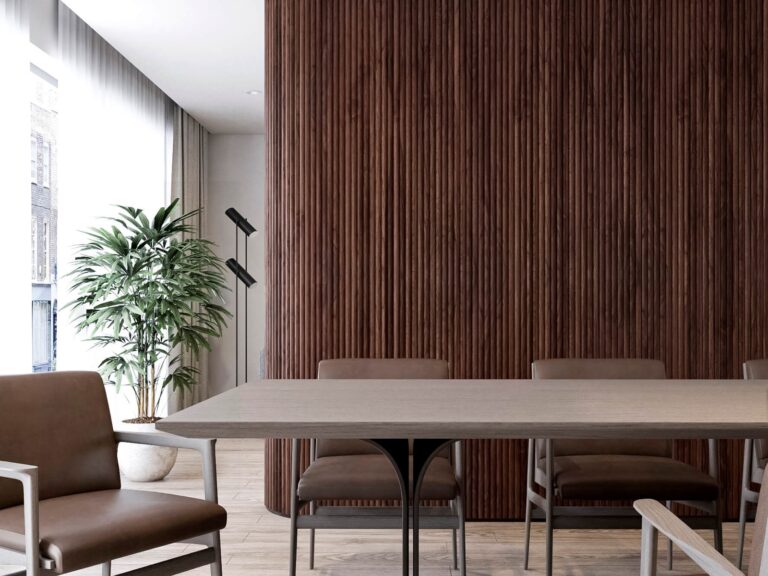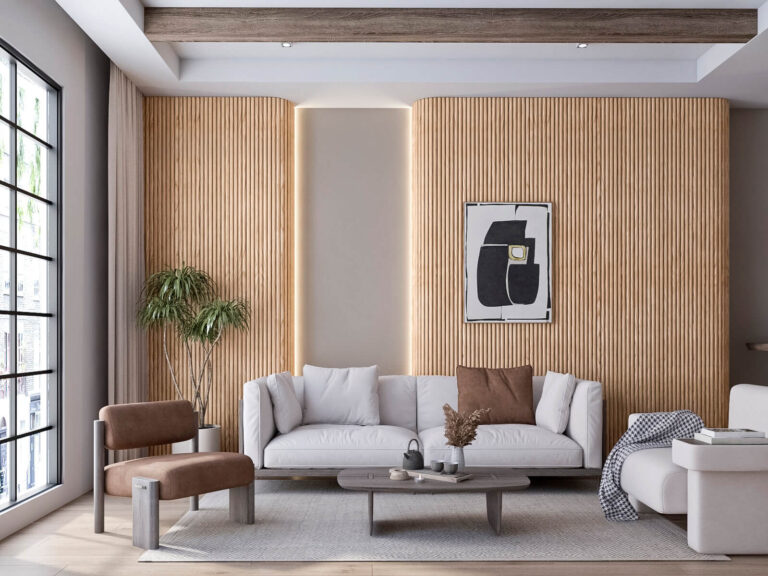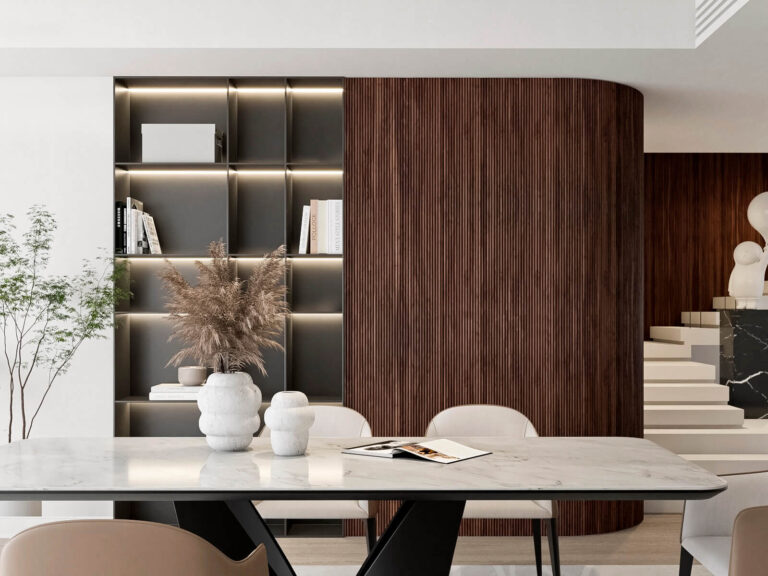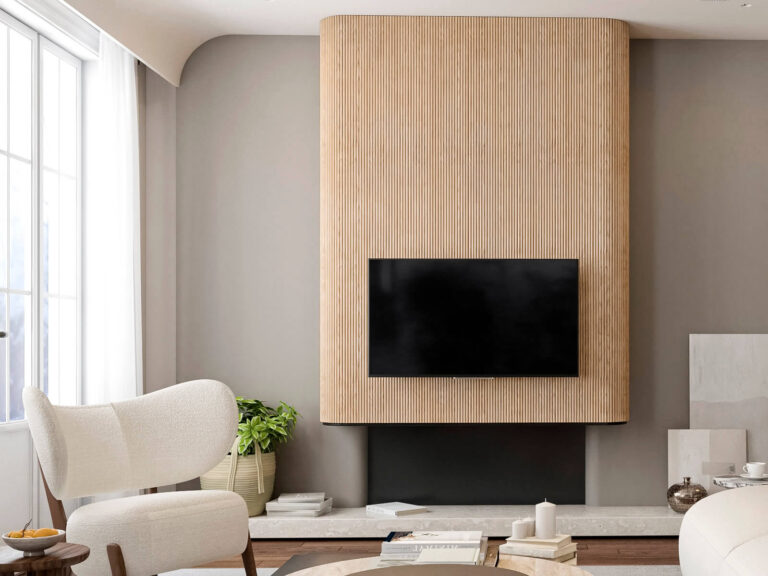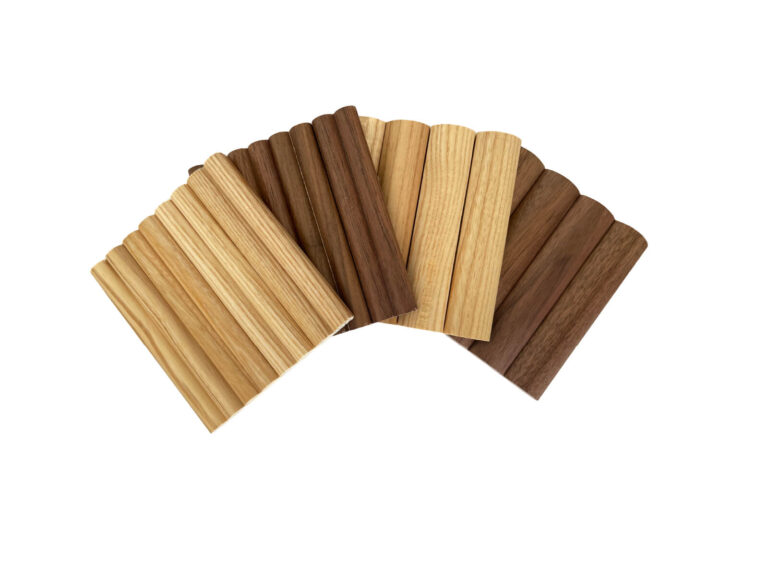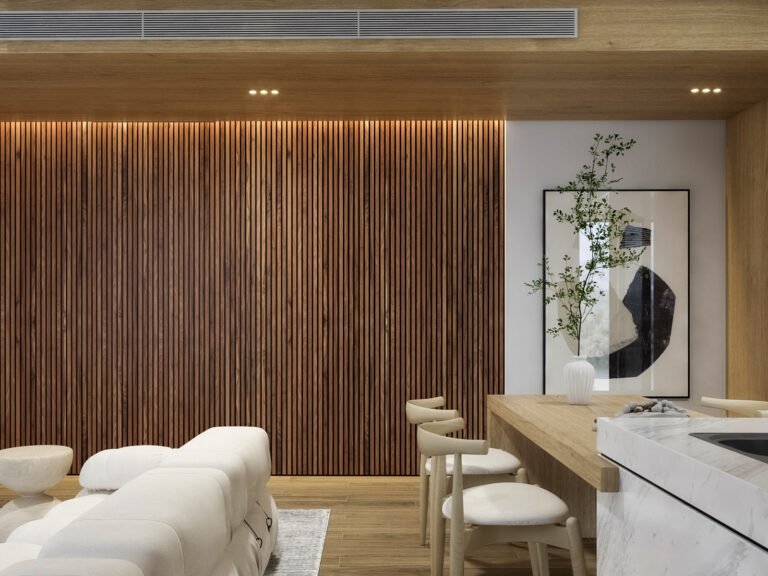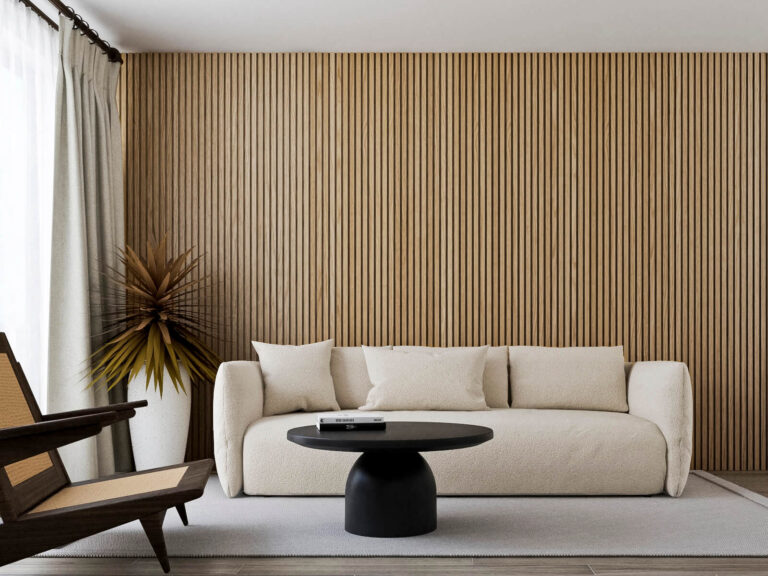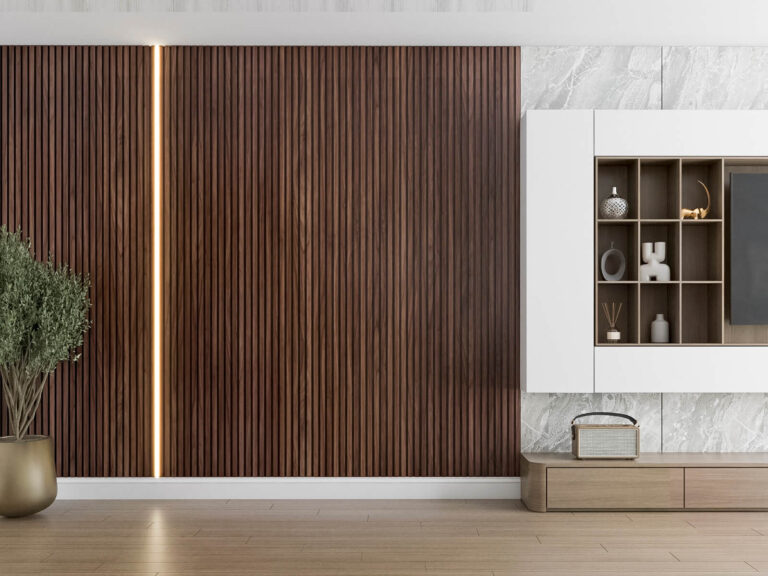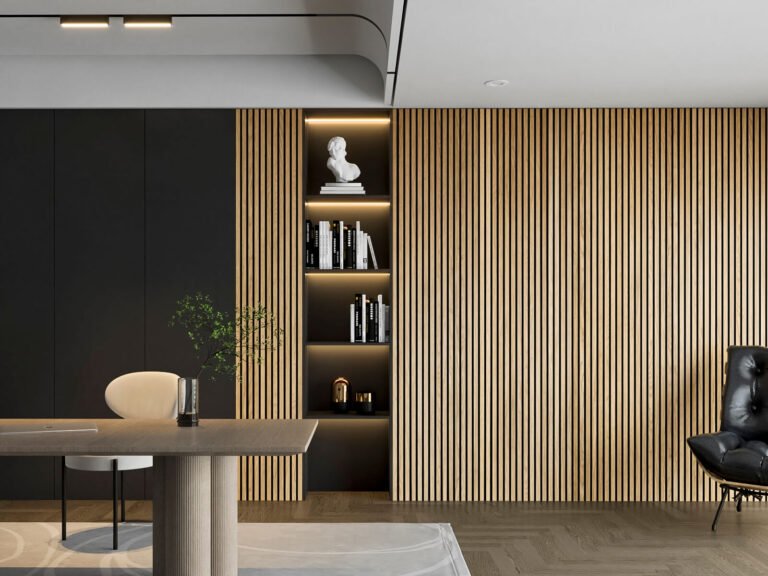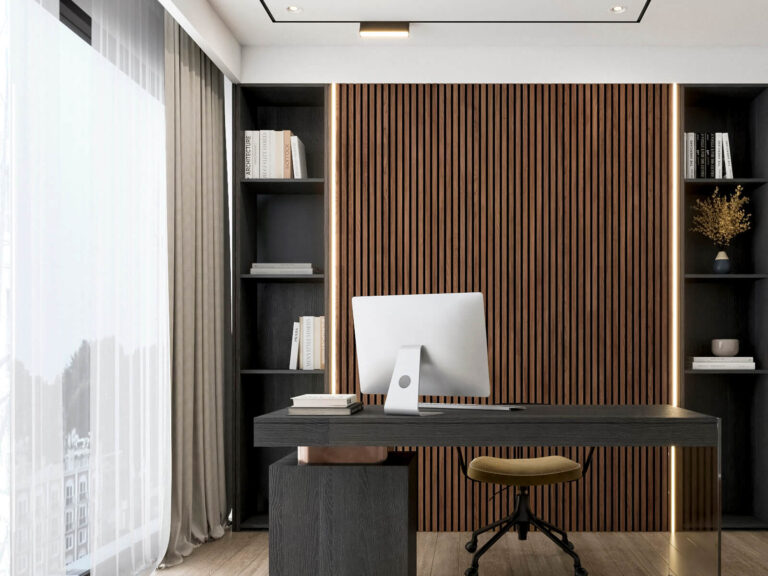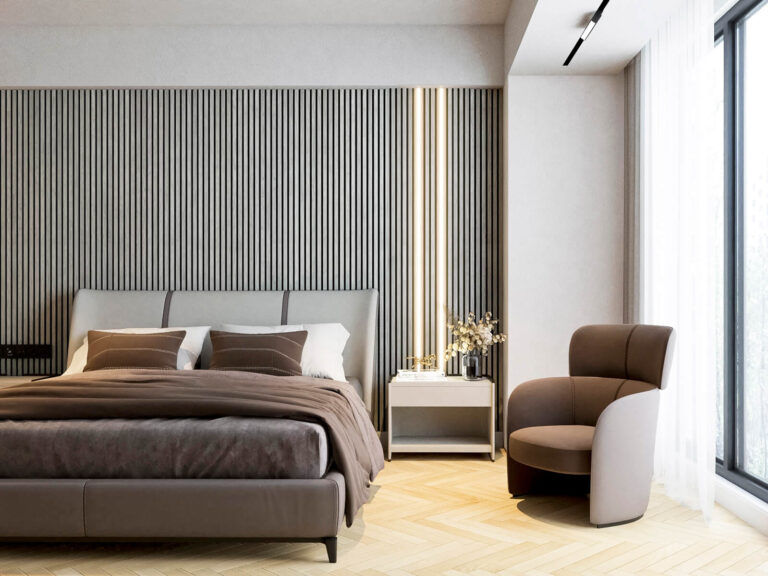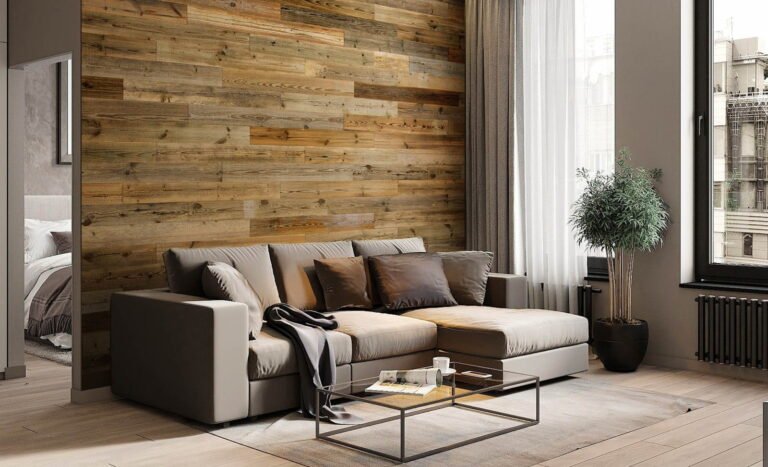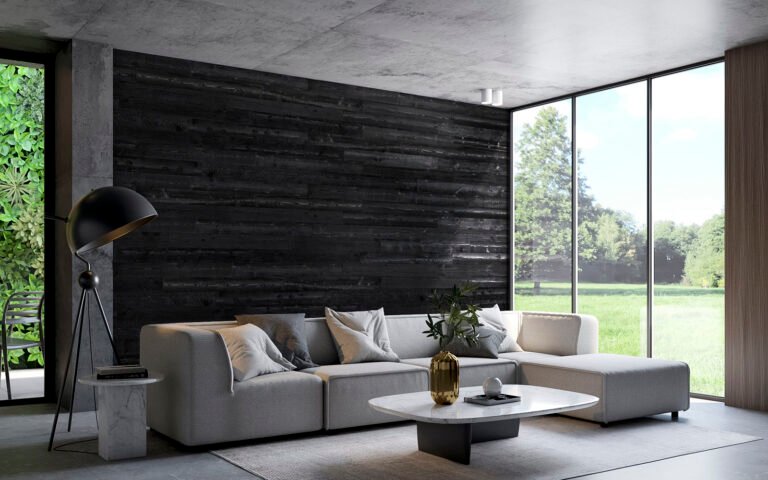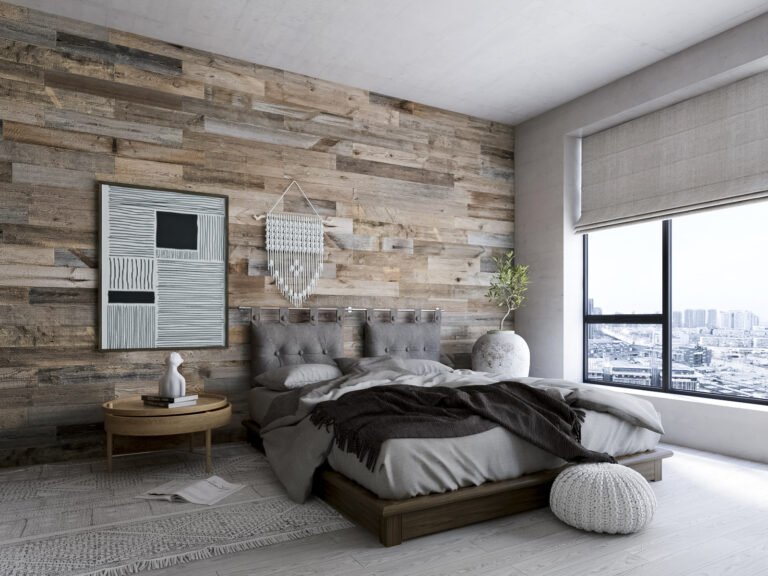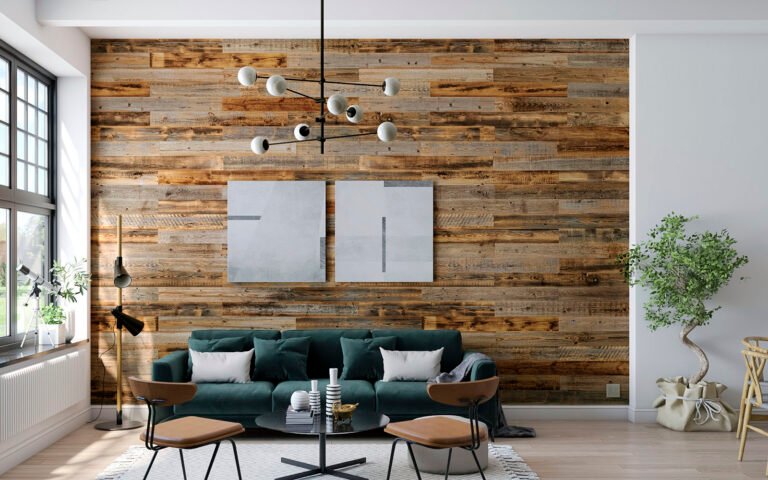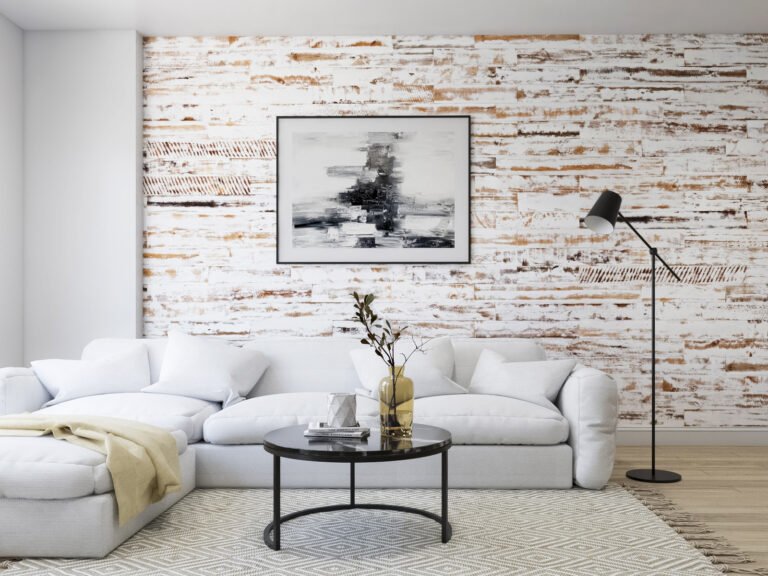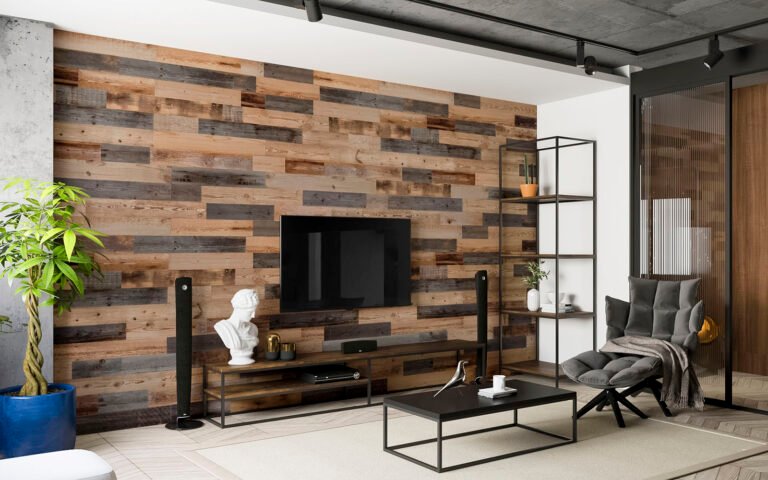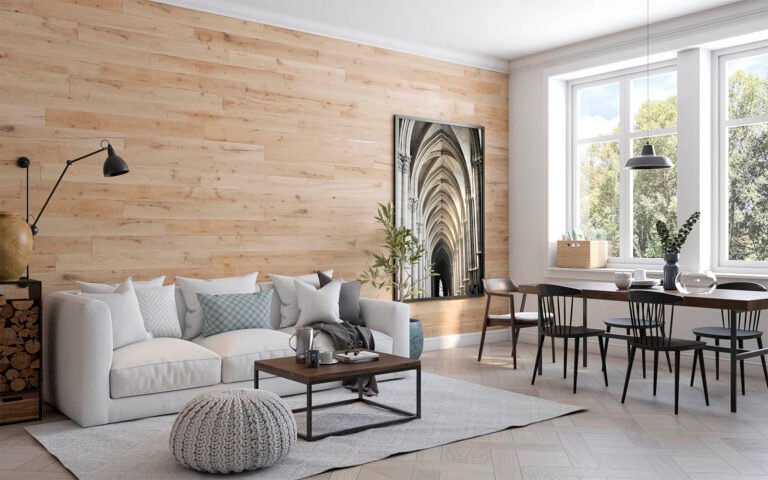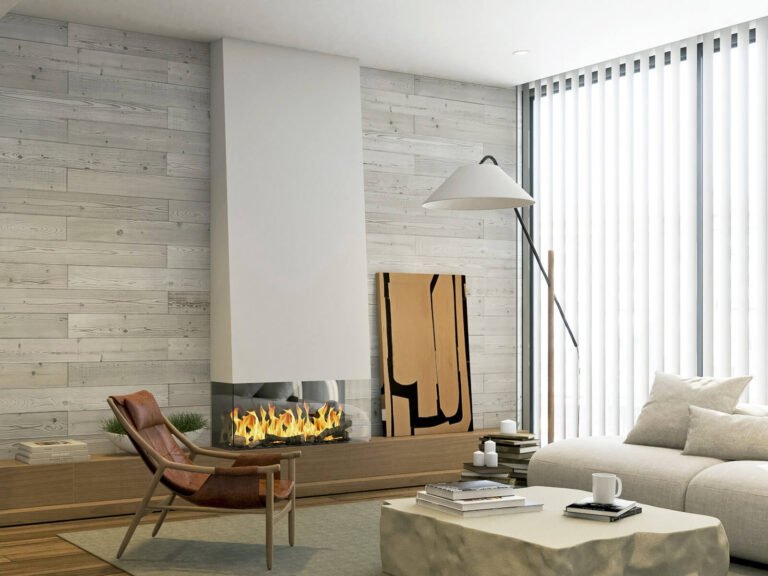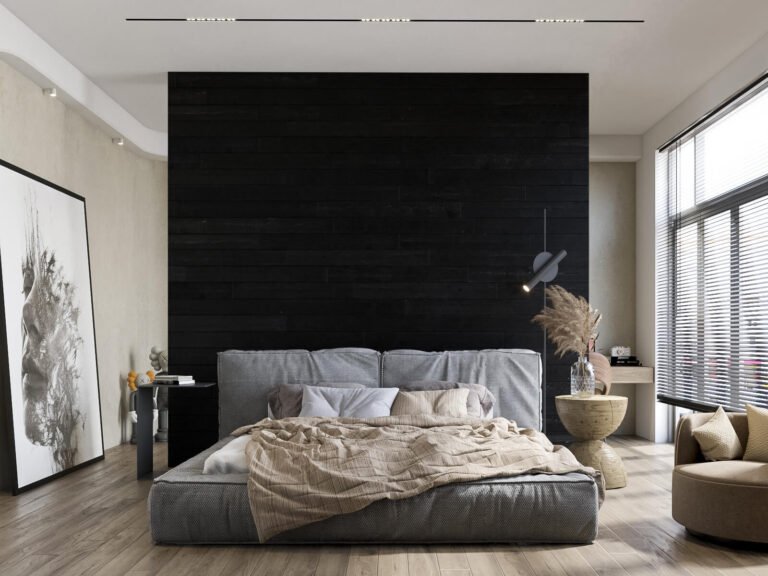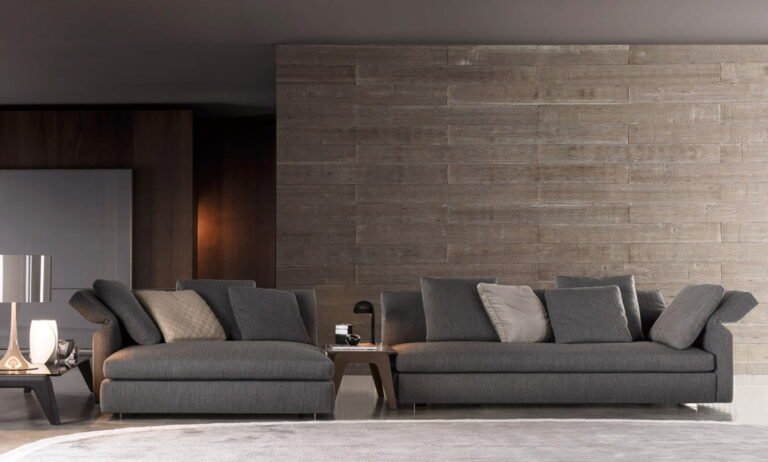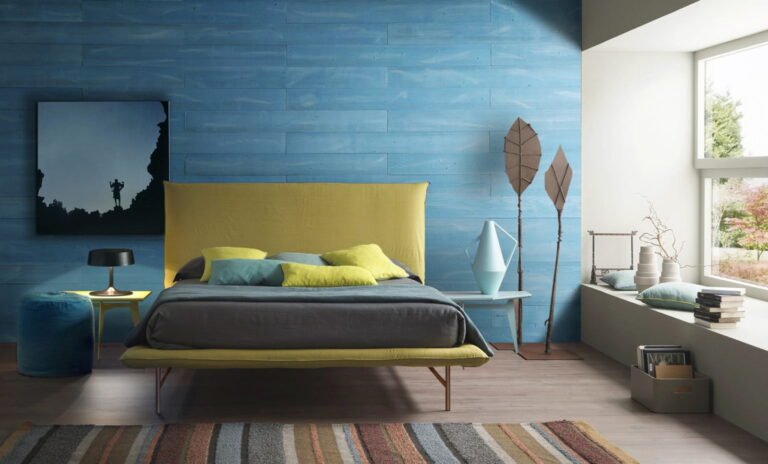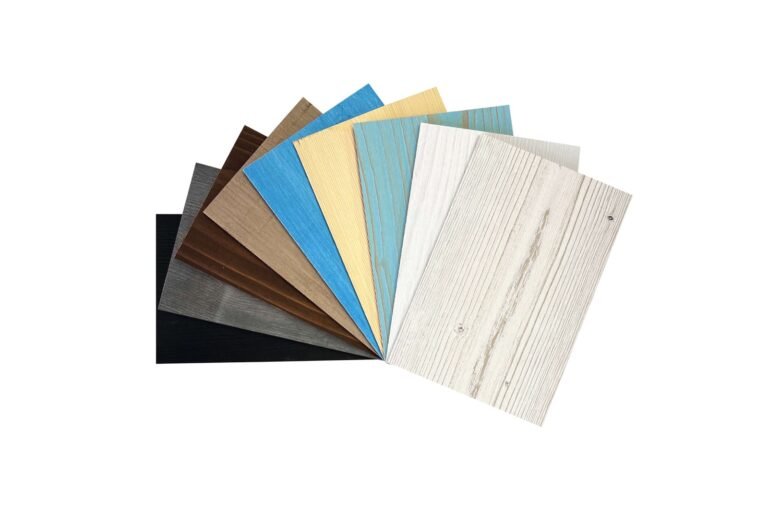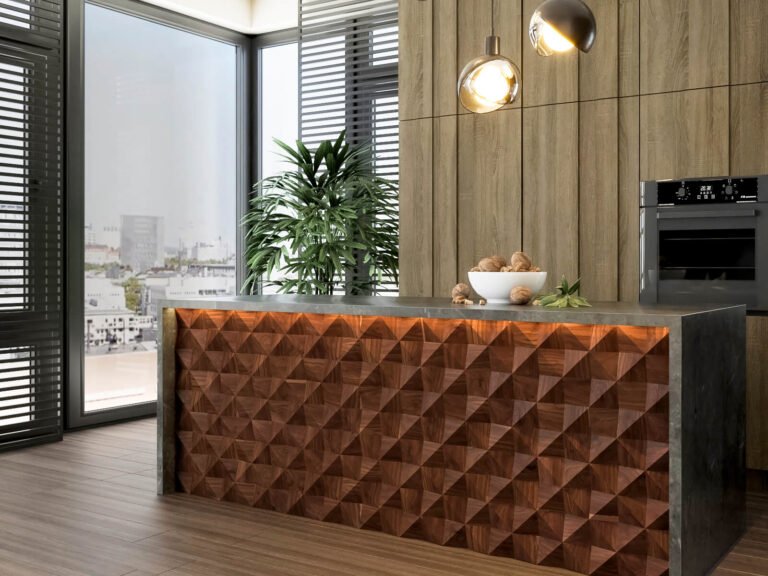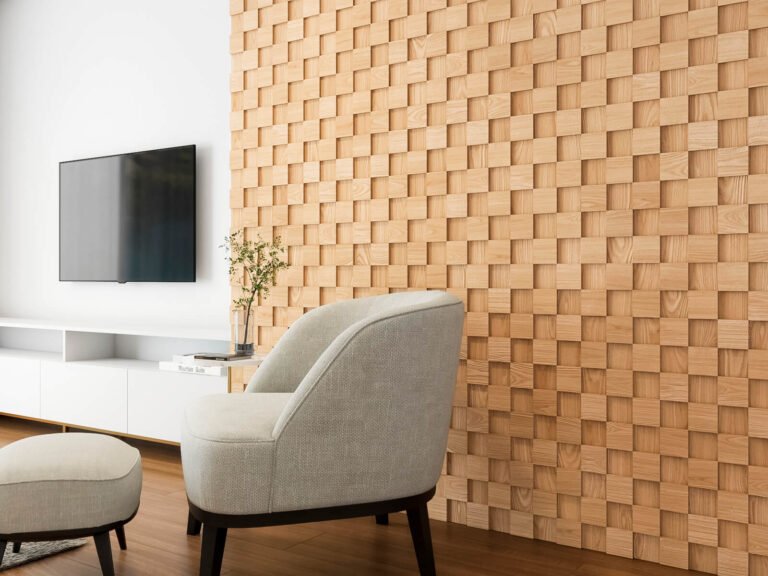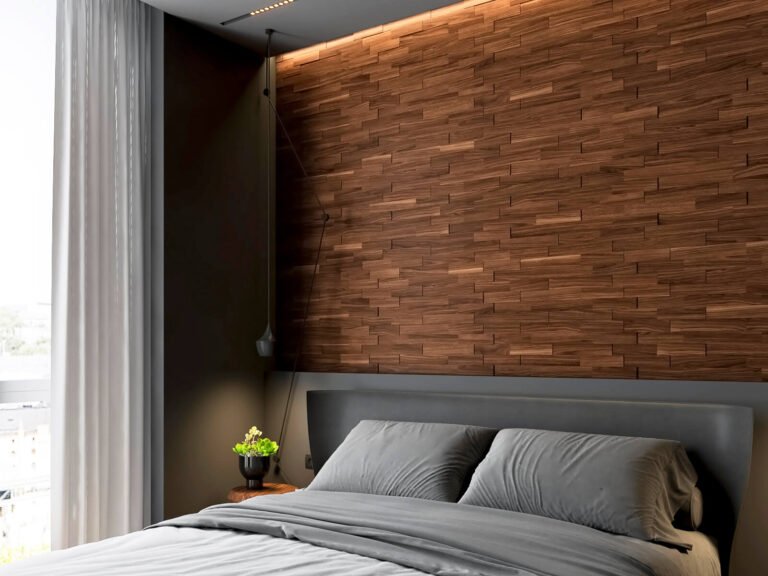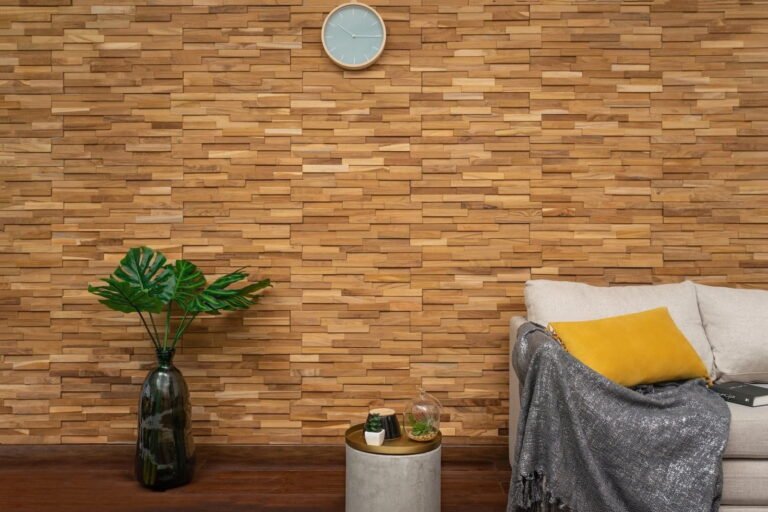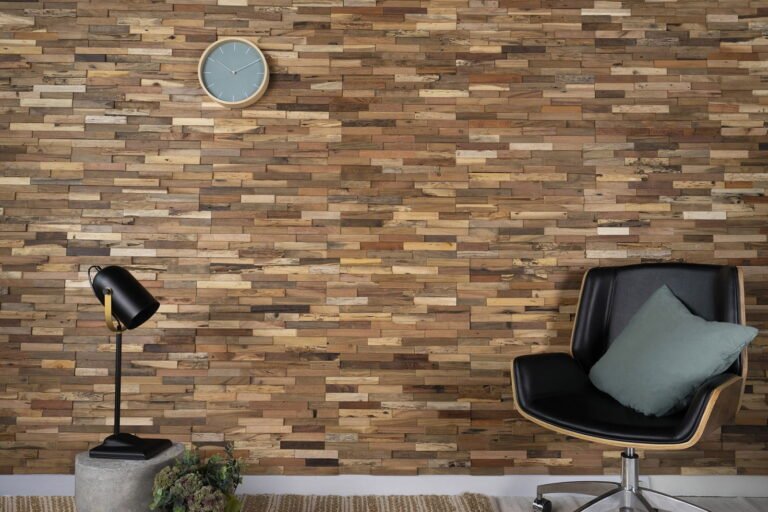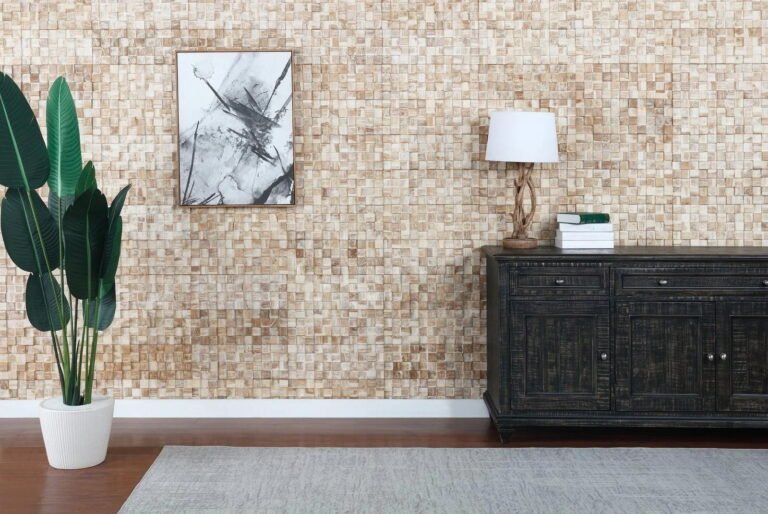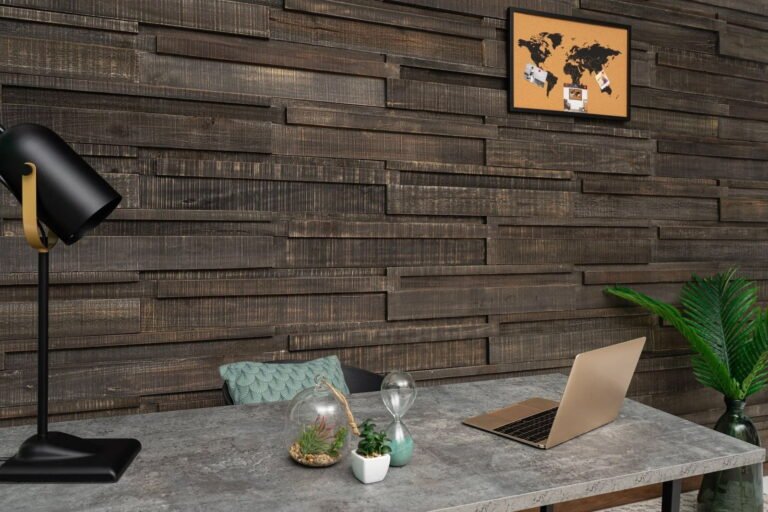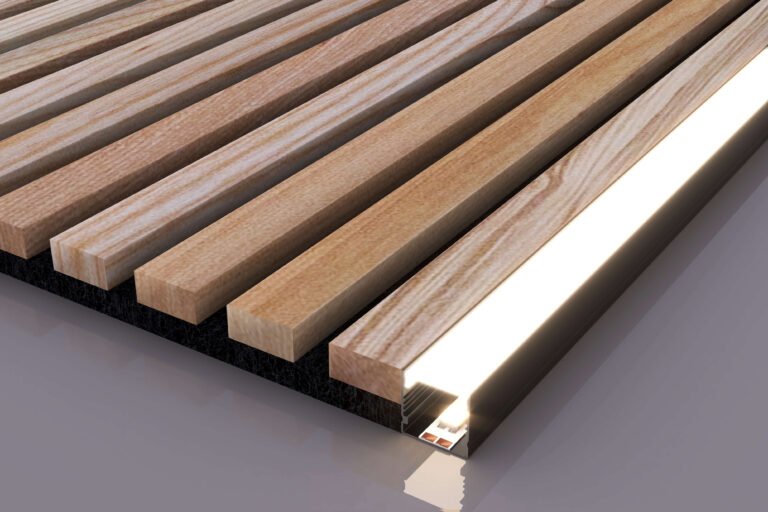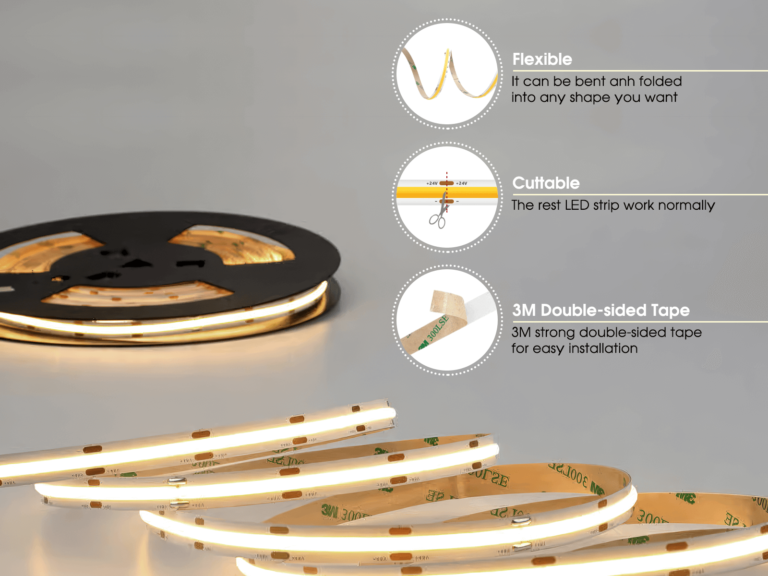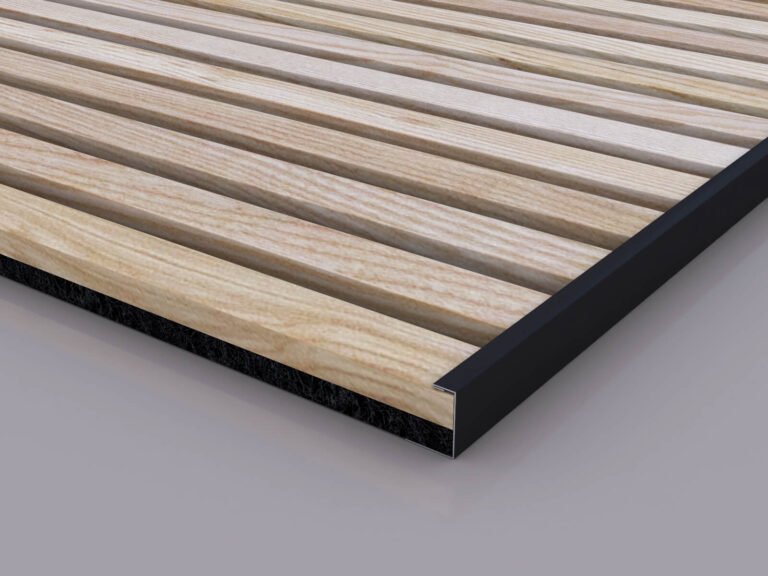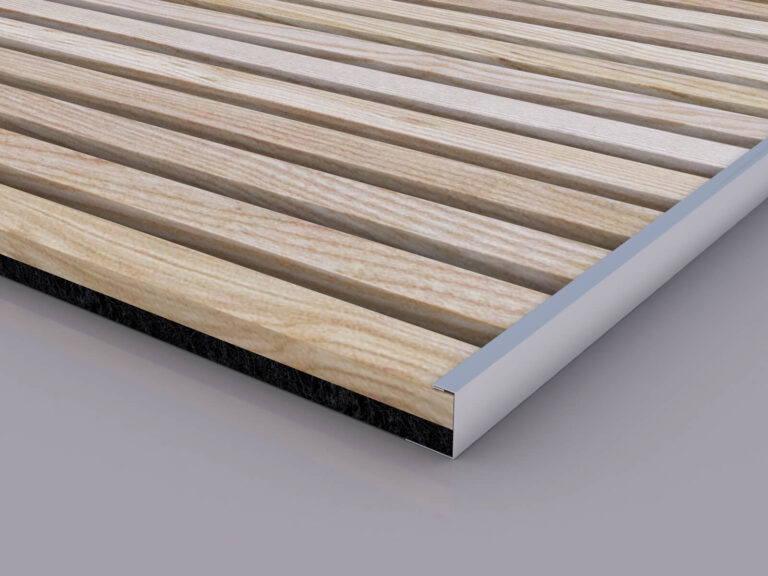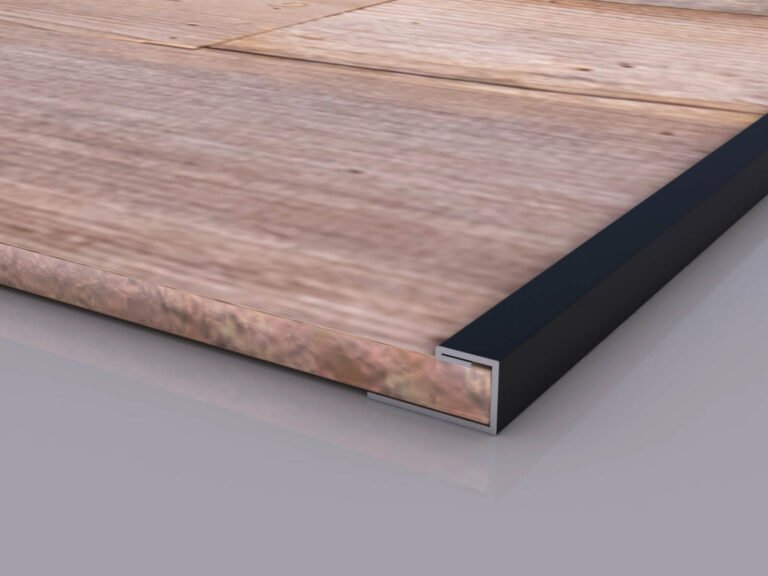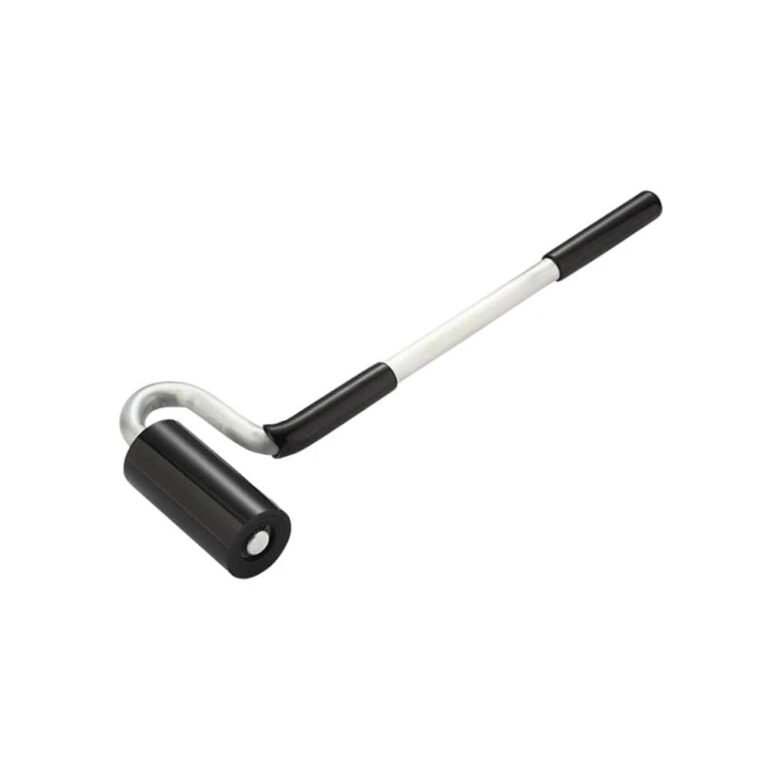What Wood to Use for Accent Wall and How to Build One?
Creating an accent wall can transform the look and feel of any room, adding character and depth to your space. One key decision in this process is choosing the suitable wood for the job. Understanding what wood to use for accent wall is crucial for achieving the desired aesthetic and durability.
In this guide, we'll explore different wood options and provide step-by-step instructions on building your accent wall, allowing you to confidently enhance your home's style.
What Are the Types of Wood for Accent Walls?
Adding an accent wall to your room is a great way to give it personality and coziness. However, choosing the correct sort of wood is imperative to have the desired look and usefulness before beginning the job. Let's explore the various options available:
MDF
Medium Density Fiberboard, commonly referred to as MDF, stands out for its smooth texture and versatility in DIY endeavors, offering a seamless experience akin to working with authentic wood, thus enabling the creation of custom-sized planks and shapes for various projects, including wood accent walls. Here are its pros and cons:
Advantages:
- Smooth Finish: MDF offers a super smooth surface, free from knots or wood grain, ensuring a seamless appearance.
- Affordability: Natural wood is generally cheaper, especially for straight and smooth varieties.
Disadvantages:
- Less durable: MDF can’t compare with wood in terms of durability and strength. Therefore, its lifespan is shorter and more prone to damage and wear.
- Not Water Resistant: Unsuitable for damp environments like bathrooms or kitchens due to its vulnerability to moisture.
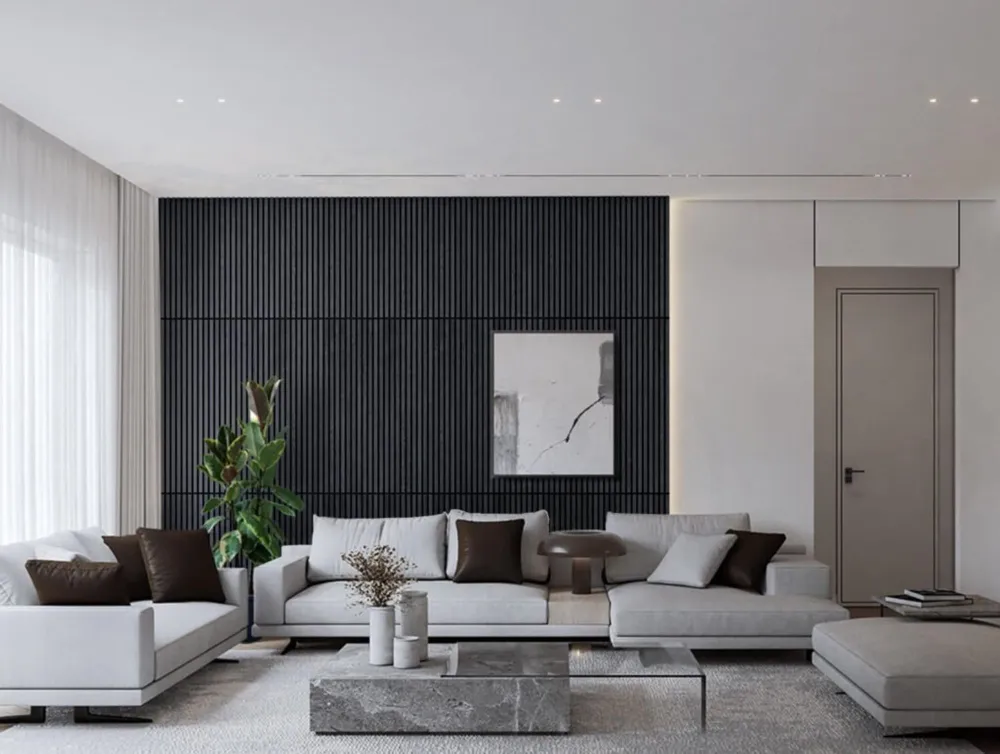
Prefinished Wall Plank
Several companies now offer lightweight, prefinished wood planks tailored for accent walls, offering a hassle-free installation experience, making them an ideal choice for those seeking simplicity in enhancing their space. Let's weigh the advantages and disadvantages:
Advantages:
- Ease of Installation: Prefinished wall planks are designed for easy installation, with step-by-step instructions that save time and effort.
- Variety of Finishes: Available in various finishes, eliminating the need for additional painting or staining.
Disadvantages:
- Higher Cost: While convenient, prefinished wall planks are more expensive than other wood options.
- Sealing Requirement: Some planks may require sealing when used in moisture-prone areas, adding extra steps to the process.
Plywood
Plywood, known for its versatility and cost-effectiveness, is a preferred choice for wood wall projects, particularly for creating wood accent walls. Its adaptability shines when fashioned into strips, allowing for the emulation of shiplap, the formation of herringbone patterns, or the crafting of modern geometric designs. Here's what you need to know:
Advantages:
- Lightweight: Plywood's thin and lightweight nature simplifies installation, requiring only nails for mounting.
- Cost-Effective: Available in various qualities and price ranges, making it an economical choice for DIYers.
Disadvantages:
- Low Quality in Some Cases: Cheaper plywood may need more durability and finish for staining.
- Time-Consuming: Cutting plywood into desired sizes can be time-consuming, requiring precision and patience.
Wood Planks
Utilizing basic pine wood planks gives accent walls a customizable touch, offering a traditional aesthetic. These planks, also known as dimensional lumber or common boards, are favored for their affordability and accessibility, coming in various sizes to accommodate diverse design preferences. Here are the pros and cons:
Advantages:
- Size Variety: Available in various sizes, allowing for customization and creativity in design.
- Finish Options: Unfinished wood planks can be stained or painted according to personal preference.
Disadvantages:
- Weight: Wood planks tend to be thicker and heavier, necessitating secure attachment to the wall.
- Quality Variation: Quality varies among wood planks, with higher-quality options coming at a higher price.
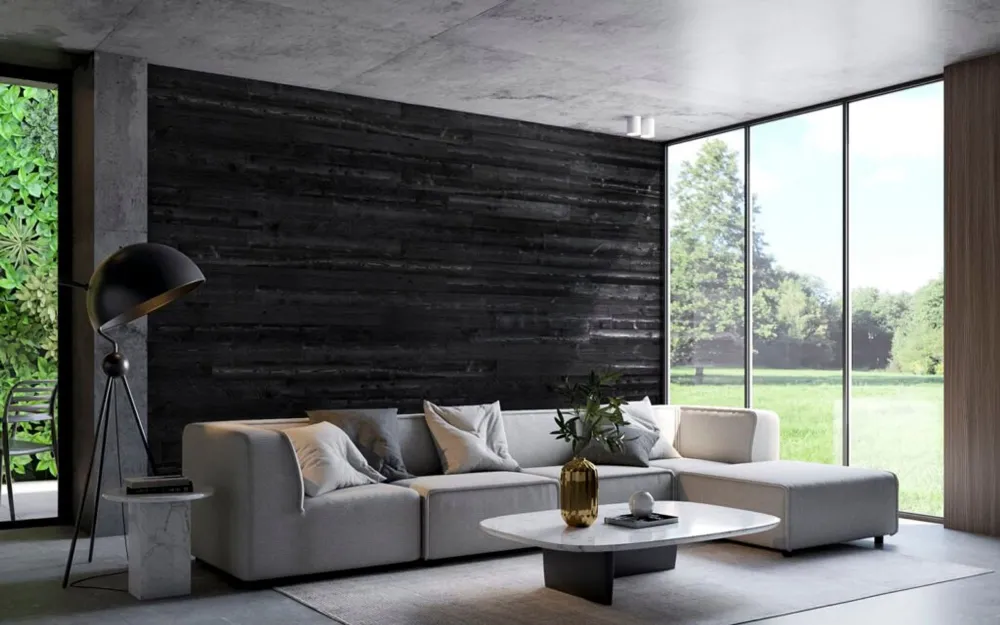
Reclaimed Wood
Despite presenting unique challenges, reclaimed wood enriches your accent walls with character and history. Contrary to its perceived elegance, reclaimed wood encompasses any wood repurposed from its original use, including pallets, old fences, or scrap piles. Consider the following:
Advantages:
- Cost-Effective: Often available at low or no cost, making it an affordable option for DIY projects.
- Unique Finishes: Offers a variety of weathered, rustic finishes that are hard to replicate artificially.
Disadvantages:
- Imperfections: Reclaimed wood is often warped and may contain remnants like old nails, requiring careful preparation.
- Non-Standard Sizes: Pieces of reclaimed wood vary in thickness and finish, posing challenges in achieving uniformity across the wall.
With these insights into the “what wood to use for accent wall” types, you can decide based on your budget, aesthetic preferences, and project requirements.
What Should You Consider When Choosing Wood for Accent Wall?
Several factors must be considered besides deciding what wood to use for accent wall to ensure it complements your space perfectly. Let's explore these considerations:
1. Budget
Consider your budgetary constraints when selecting the type of wood for your accent wall. Different wood materials vary in price, so choose one that fits your financial parameters without compromising quality or aesthetics.
2. Style and Aesthetic Preferences
Determine the style and aesthetic you wish to achieve with your accent wall. Whether you prefer a bold statement piece or a subtle addition to the room, align your choice of wood and design with the overall ambiance you want to create.
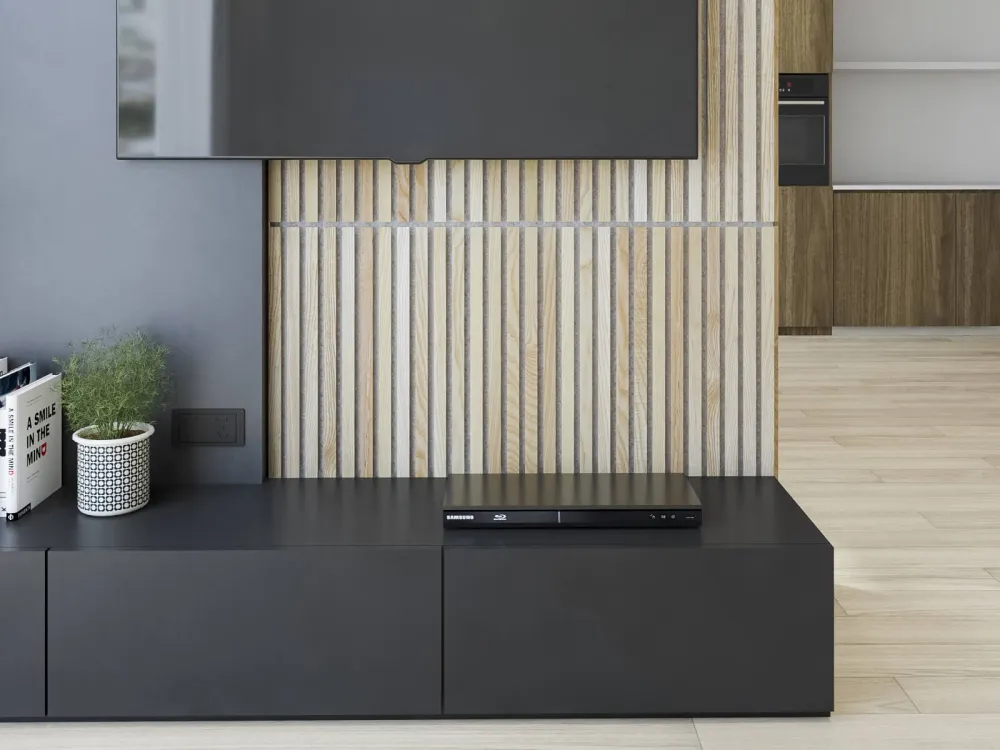
3. Room Environment (Humidity, Light Exposure)
Assess the environmental conditions of the room where the accent wall will be installed. Factors such as humidity levels and exposure to natural light can impact the durability and appearance of the wood over time. Choose a wood type that can withstand the specific conditions of your space.
4. Ease of Installation and Maintenance
When choosing what wood to use for accent wall, consider the effort required for installation and ongoing maintenance. Opt for wood materials and finishes that are easy to install and maintain, ensuring a hassle-free experience in the long run. Additionally, consider how easily the wood can be cleaned or repaired.
What Are the Tools and Materials Needed?
Before starting your wood accent wall project, gather the necessary tools and materials to ensure a smooth installation. Here's what you'll need:

Materials Needed:
- Wood panels
- Brad nailer
- Circular saw or jigsaw or miter saw
- Level
- Speed square
- Measuring tape
- Pencil, eraser & paper
- Palm Sander
- Caulk
- Wood filler or spackling compound
- Paint, roller & brush
- Painters tape
Tools Needed:
- Pry bar
- Miter saw, or circular saw
- Measuring tape
- Pencil
- Painting supplies
- Eye protection
- Square
- Level or a laser level
- Stud finder
- Finish nail gun
- Sanding block
These tools and materials will streamline the installation process and ensure a successful outcome for your wood accent wall.
How to Install a Wood Accent Wall?
Now you know “what wood to use for accent wall?”, let’s transform your space with a wood accent wall that adds warmth and character to any room. Follow these simple steps to install your wood accent wall:
1. Prepare the Surface: To ensure a smooth installation, begin by cleaning the wall surface, removing debris, and extracting any protruding nails.

2. Measure the Area: Measure the length and width of the wall where you plan to install the wood panels to determine the quantity needed.
3. Acclimate the Panels: Allow the wood panels to acclimate to the room's temperature and humidity for 48-72 hours to prevent warping or shrinking after installation.
4. Inspect the Panels: Before beginning installation, check each panel for signs of damage or defects to ensure a seamless finish.
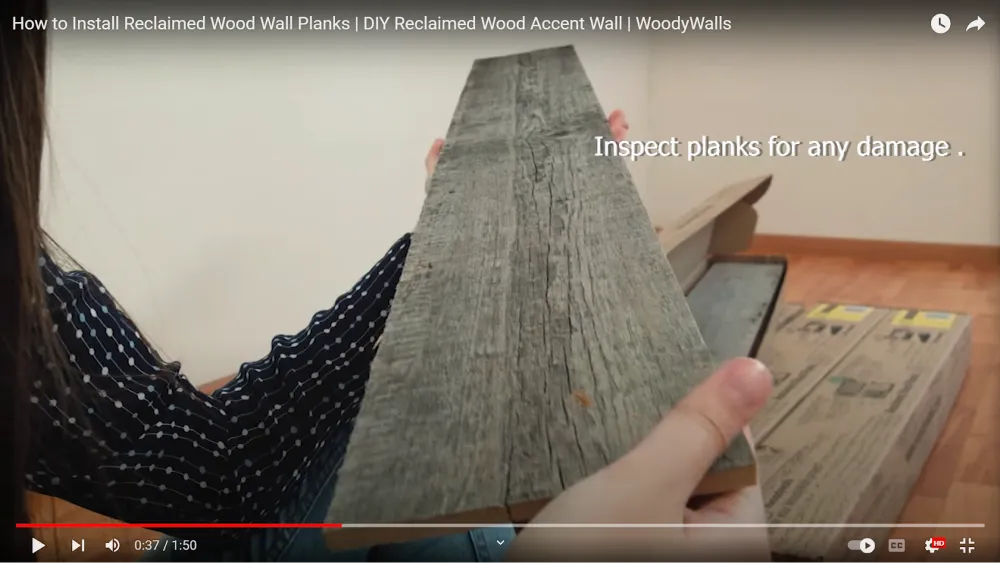
5. Plan Your Pattern: Lay out the panels on the floor to plan your desired pattern, mixing planks from different bundles for even color distribution and visual interest.
6. Mark a Reference Line: Use a level to draw a reference line on the wall to guide the first row of panels. Apply adhesive to the back of the panels and affix them along the reference line.
7. Secure the Panels: Use finishing nails to securely fasten the panels to the wall, ensuring they are aligned and level.
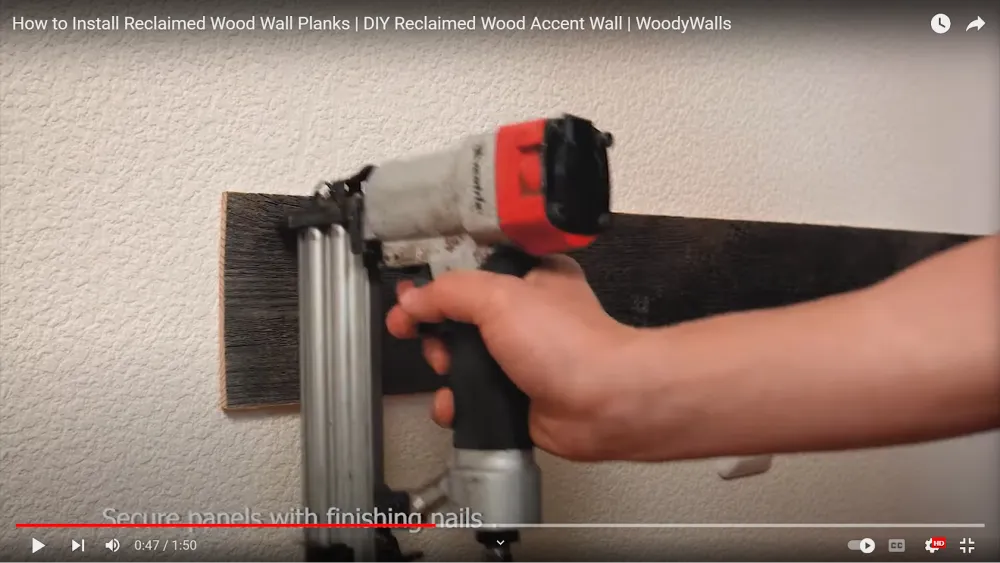 8. Trim Excess Panels: Use a miter saw or fine-toothed handsaw to trim excess panel length along the wall edges for a neat and precise fit.
8. Trim Excess Panels: Use a miter saw or fine-toothed handsaw to trim excess panel length along the wall edges for a neat and precise fit.
9. Trim Top and Bottom Rows: For the top and bottom rows, cut the panels lengthwise using a jigsaw or fine-toothed handsaw to accommodate the wall's dimensions.
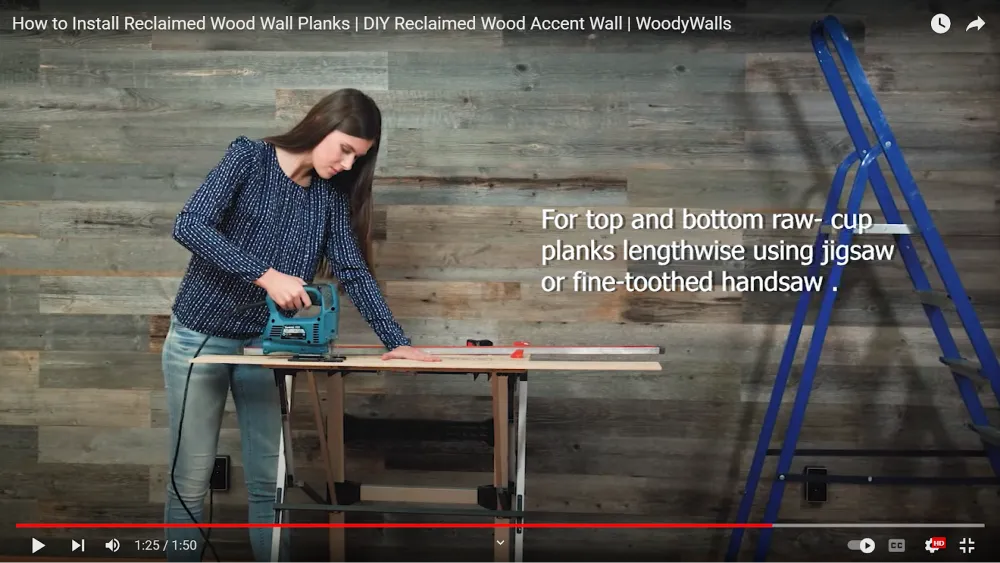
By following these steps carefully, you can achieve a professional-looking wood accent wall that enhances the ambiance of your space and reflects your unique style.
How to Maintain and Take Care of Accent Wall?
Once you've installed your stunning wood accent wall, maintaining its beauty and durability is simple with these easy-to-follow tips:
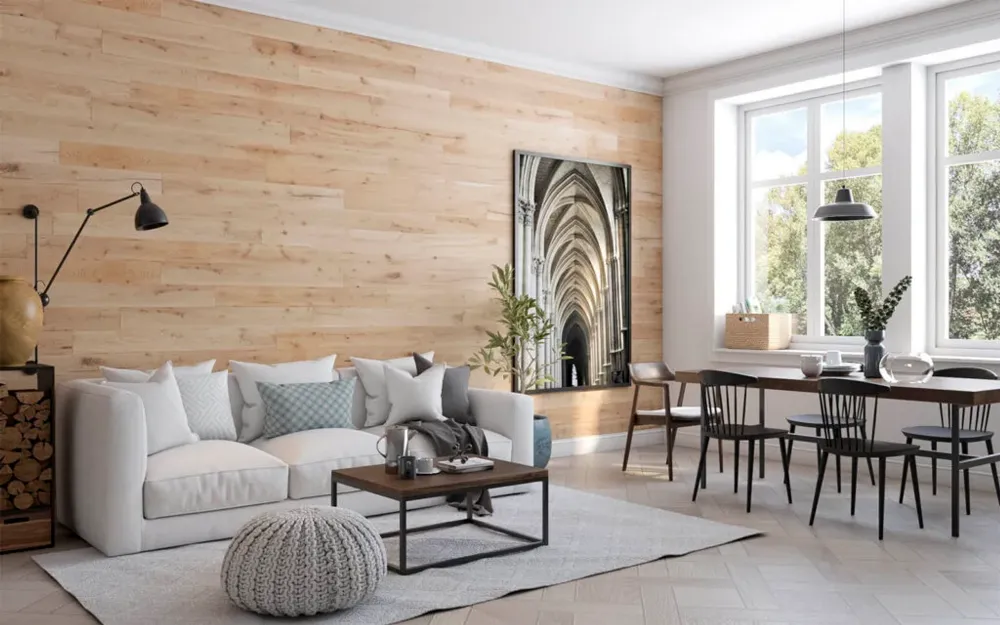
1. Regular Cleaning and Dusting
Maintain the appearance of your wood accent wall by regularly dusting it with a soft cloth or microfiber duster to remove surface dust and debris. Avoid harsh chemicals or abrasive cleaners, which may damage the wood finish.
2. Pay Attention to Wear and Damage
Look for signs of wear or damage, such as scratches, dents, or fading. Promptly address any issues by sanding and refinishing affected areas or applying touch-up paint to restore the wall's appearance.
3. Long-Term Maintenance Advice
While DIY wood accent walls typically require minimal maintenance, it's essential to periodically assess the wall's condition and make any necessary repairs or updates. Additionally, consider periodically refreshing the wall's finish with a new coat of paint or stain to maintain its vibrant appearance and protect it from wear and tear.
Discover the Perfect Wood for Your Accent Wall with Woody Walls
At WoodyWalls, we're dedicated to bringing your vision to life with our meticulously crafted wood panels. Besides “what wood to use for accent wall”, we understand the essence of sustainable materials in interior design, ensuring that our panels are aesthetically pleasing, functional, and eco-friendly.
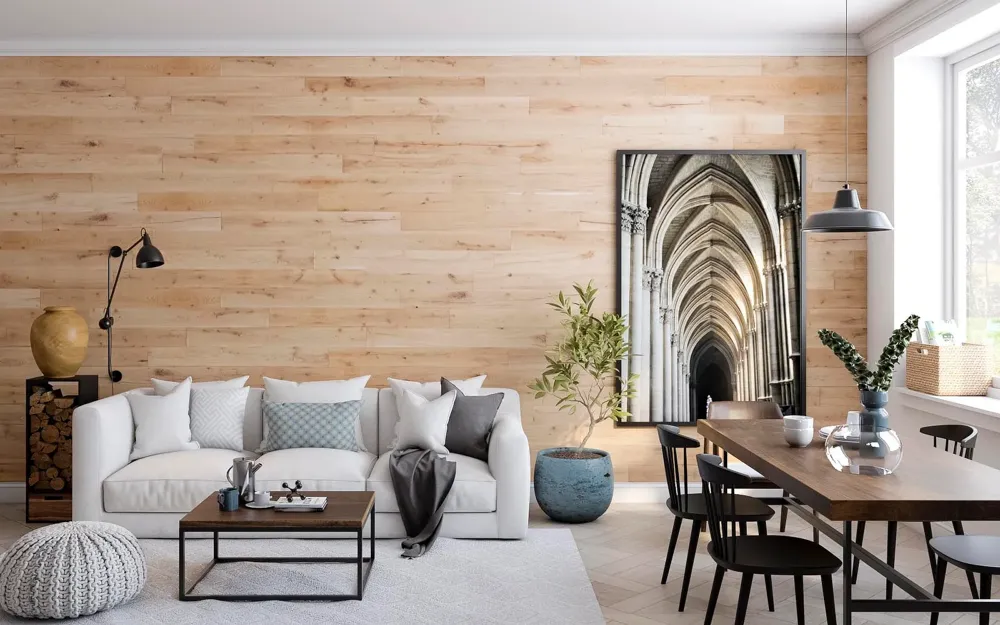
With a wide range of designs and colors to choose from, including vintage whites, rustic browns, and dramatic charcoals, Woody Walls offers options to suit any style or preference. Plus, with our customer satisfaction guarantee, you can shop confidently, knowing your satisfaction is our top priority.
Transform your space with Woody Walls today and experience the timeless beauty of genuine wood paneling!
